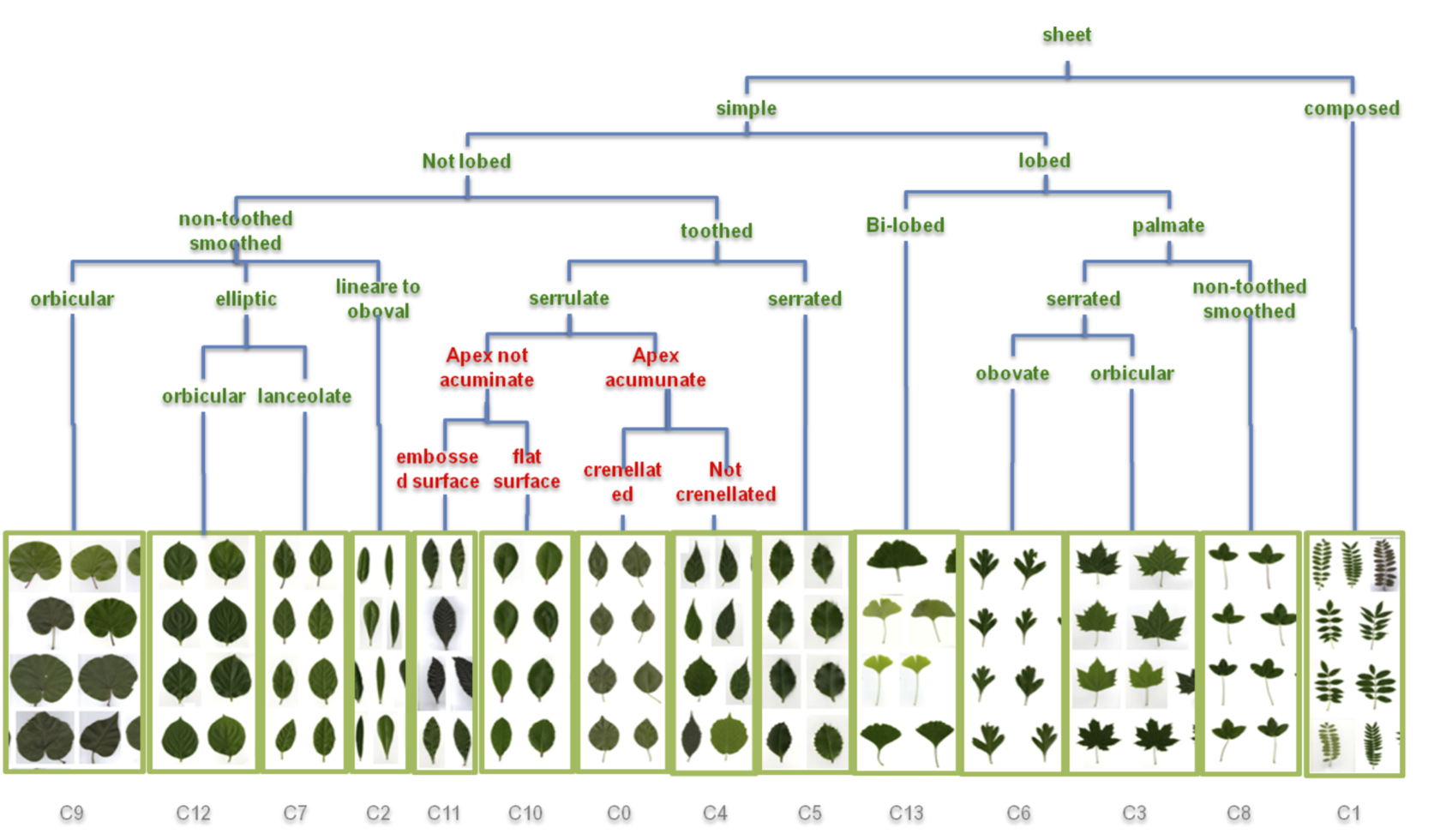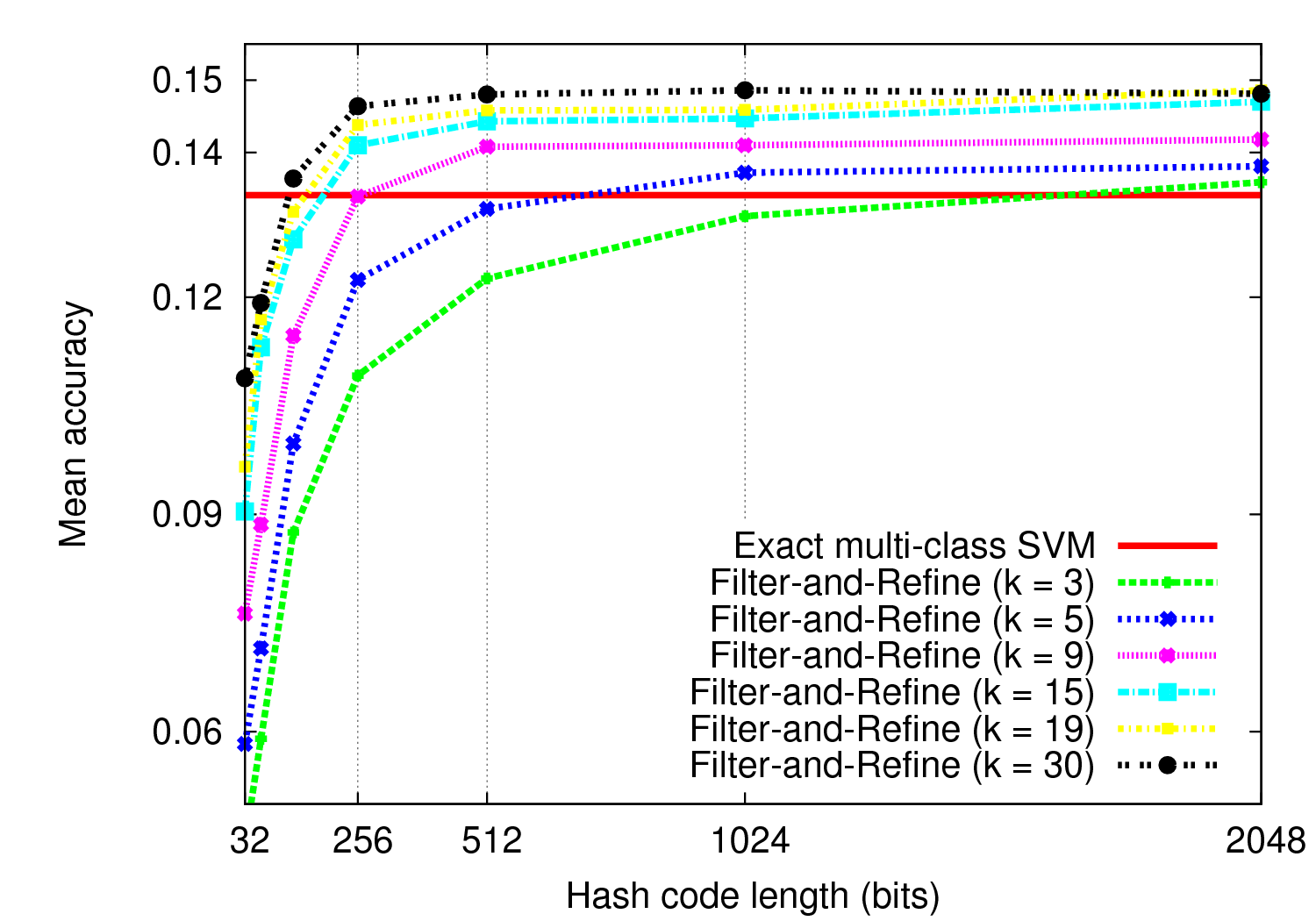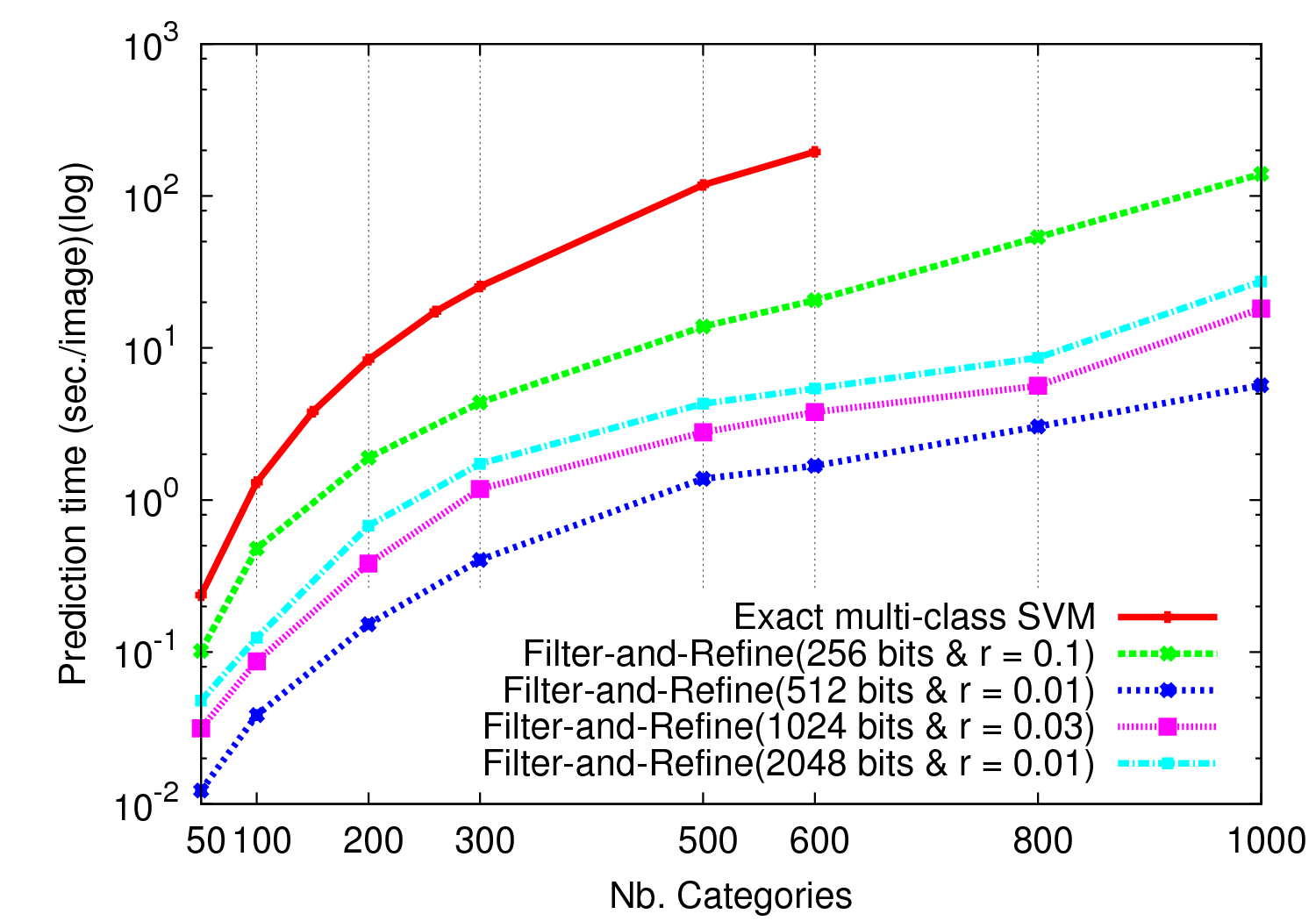Section: New Results
Feature space structuring
Participants : Nozha Boujemaa, Hervé Goëau, Amel Hamzaoui, Saloua Ouertani-Litayem, Mohamed Riadh Trad.
Plant Leaves Morphological Categorization with Shared Nearest Neighbors Clustering
Participants : Amel Hamzaoui, Hervé Goëau, Nozha Boujemaa.
In [9] we present an original experiment aimed at evaluating if state-of-the-art visual clustering techniques are able to automatically recover morphological classifications built by the botanists themselves. The clustering phase is based on a recent Shared-Nearest Neighbors (SNN) clustering algorithm, which allows combining effectively heterogeneous visual information sources at the category level. Each resulting cluster is associated with an optimal selection of visual similarities, allowing discovering diverse and meaningful morphological categories even if we use a blind set of visual sources as input. Experiments have been performed on ImageCLEF 2011 plant identification dataset [23] , specifically enriched in this work with morphological attributes tags (annotated by expert botanists). The results presented in Figure 4 are very promising, since all clusters discovered automatically can be easily matched to one node of the morphological tree built by the botanists. This work is also described in details in Amel Hamzaoui's thesis [4] .
|
Distributed KNN-Graph approximation via Hashing
Participants : Mohamed Riadh Trad, Nozha Boujemaa.
High dimensional data hashing is essential for scaling up and distributing data analysis applications involving feature-rich objects, such as text documents, images or multi-modal entities (scientific observations, events, etc.). In this first research track, we first investigated the use of high dimensional hashing methods for efficiently approximating K-NN Graphs [16] , [19] , [17] , particularly in distributed environments. We highlighted the importance of balancing issues on the performance of such approaches and show why the baseline approach using Locality Sensitive Hashing does not perform well. Our new KNN-join method is based on RMMH, a hash function family based on randomly trained classifiers that we introduced in 2011. We show that the resulting hash tables are much more balanced and that the number of resulting collisions can be greatly reduced without degrading quality. We further improve the load balancing of our distributed approach by designing a parallelized local join algorithm, implemented within the MapReduce framework.
Hash-Based Support Vector Machines Approximation for Large Scale Prediction
Participants : Saloua Ouertani-Litayem, Nozha Boujemaa.
How-to train effective classifiers on huge amount of multimedia data is clearly a major challenge that is attracting more and more research works across several communities. Less efforts however are spent on the counterpart scalability issue: how to apply big trained models efficiently on huge non annotated media collections ? In [10] , we addressed the problem of speeding-up the prediction phase of linear Support Vector Machines via Locality Sensitive Hashing. We proposed building efficient hash-based classifiers that are applied in a first stage in order to approximate the exact results and filter the hypothesis space. Experiments performed with millions of one-against-one classifiers show that the proposed hash-based classifier can be more than two orders of magnitude faster than the exact classifier with minor losses in quality (cf. Figure 5 ).





